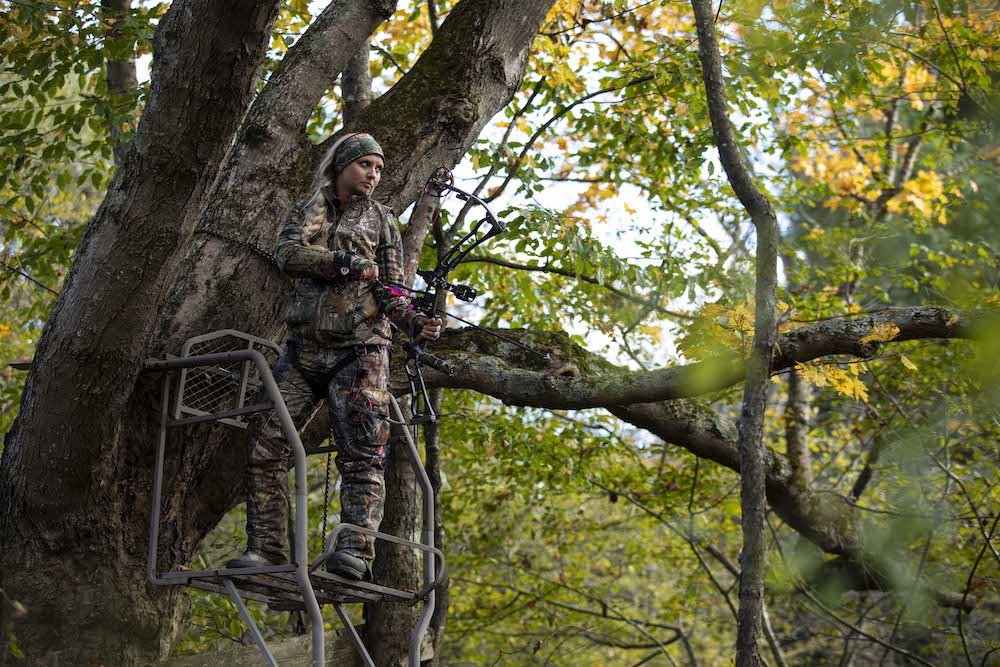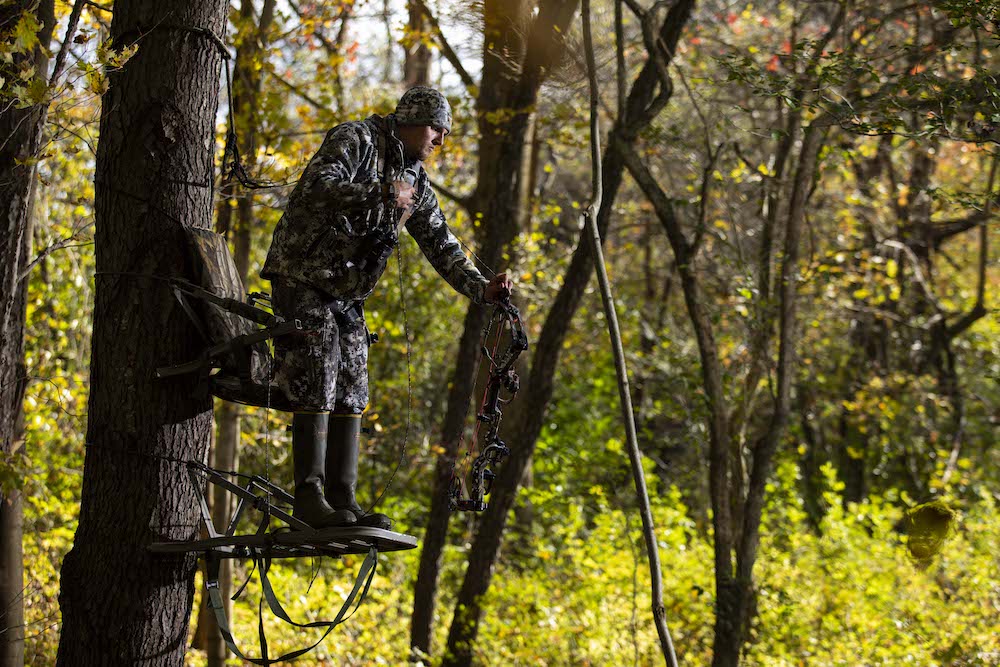What’s your most important piece of hunting gear? Certainly your bow and arrows come in handy, but they won’t save your life. But your safety harness might. If you hunt at all from a tree, a good harness should be mandatory equipment.
You probably already own a safety harness. Most treestands, including all of those approved by the Treestand Manufacturer’s Association, come with one at purchase. The harness that comes with your stand should work just fine. But sometimes those harnesses are uncomfortable, don’t fit right, or aren’t rated for your weight. In that case, you need to purchase one separately.
What’s the best way to choose the right treestand harness? Ask your hunting partners what they wear, find out what they like and don’t like, and then try them on. Heck, even practice using them just off the ground with your friends supervising.
If you’re a solo hunter, you can always look at online product reviews. Do your research about each harness system and find out what other bowhunters are saying about them. Then if you can, visit your local archery shop or sporting goods store and ask questions. Again, try the harness on before you buy it so you can see how it fits.

There are different types of safety harnesses. Choose one that’s best for your body type and hunting style. Photo Credit: Bowhunters United
A few different styles are available, from bare-bones to vest-style harnesses. Some are made to be extremely lightweight and quiet, while others are decked out with vests and accessory pockets. All are designed to keep you safe in the event of a fall.
When you pick out a harness, make sure it’s rated for your weight. Some are tailored specifically for women, with smaller waistbands and higher hip straps. Whatever you choose, make sure the harness fits comfortably so that wearing it becomes second nature.
Once you’ve got your harness, there are a couple of different ways to use it. One is with a tree strap, which buckles around the tree. You attach the carabiner to your harness tether and to the tree strap. As you climb up, you loosen the tree strap, slide it up higher, then re-tighten it. Repeat the process until you’re at your hunting height, and then remember to position the strap so that it catches you quickly in the event of a fall, but also allows you to draw and maneuver your bow. This is a good system for use with climbing treestands.
For hang-on or ladder stands, you’re more likely to use a safety line (generically called lifelines, though an actual LifeLine model is available from Hunter Safety Systems). A safety line is heavy-duty climbing rope that runs from just above your hunting height to near the base of the tree, secured around the tree at the top and bottom. You then attach your tether to a Prusik knot on the safety line and slide it up and down the line (rather than around the tree) as you climb up and down.
In either case, it’s also a good idea to have a suspension-relief strap, which should be carried on your person — not in a backpack — any time you’re in a tree. If you fall, the pressure of the harness causes blood to pool in your legs as you dangle, and that can ultimately kill you. If you can’t get back into your stand, a suspension-relief strap clips to your harness and consists of a loop that you can put your foot in to exercise your leg and keep blood from pooling up as you await help.
Once you’ve got your harness, your tethering system and a suspension-relief strap, you’re ready to hunt. But what should you do to ensure this lifesaving equipment is still up to its task if you’ve owned the gear for a while?
First, check the warranty or call the company if you’re unsure about the life of your harness. Some harnesses actually have an expiration date.

Check your harness before each use. Photo Credit: Bowhunters United
It’s a good practice to examine your harness every time you use it. Check for tears, frayed stitching, wear spots, mildew, cracks, corrosion, rust or any other signs that the harness is no longer in peak condition. Check for dirt or grease, which can damage the harness as well. Wash the harness with soap and water to remove these substances if you can.
Unlike utility workers, bowhunters use harnesses for only a few months of the year, so the equipment should last a long time. However, when not in use, keep your safety equipment out of direct sunlight, and store it in a cool, dry place, preferably neatly folded, and never on a dirt or concrete floor.
One other vital consideration: Replace the harness after a fall. The shock and strain from a sudden fall could compromise its structural integrity. You’re always better safe than sorry.
More Reading:
https://bowhuntersunited.com/2017/05/03/treestand-safety-3-tips-using-safety-harnesses/